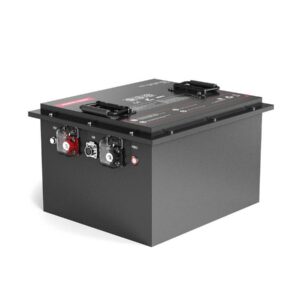
Which car battery is better
The best car battery choice depends on your vehicle type and usage. For traditional combustion engines, AGM (Absorbent Glass Mat) batteries provide superior cold cranking amps (CCA) and vibration resistance. Lithium-ion options like LiFePO4 excel in weight reduction (50-70% lighter) and longer cycle life, though they require compatible charging systems. Always match OEM specifications for voltage (typically 12V) and reserve capacity. Pro Tip: In cold climates, prioritize CCA ratings exceeding OEM requirements by 15-20% for reliable starts.
What Is the Best Battery for a Diesel Pickup Truck?
What defines a superior AGM battery?
AGM batteries use fiberglass separators to hold electrolyte, enabling spill-proof designs and 3× faster recharge than flooded batteries. Key metrics: 800-1000 CCA, 100-120Ah capacity. Deep Dive: Modern AGM batteries like Odyssey Extreme feature 400+ cycles at 50% depth of discharge. Their low internal resistance (2-4mΩ) supports high-power accessories. For example, a 94R AGM battery can power winches while maintaining starter voltage. Warning: Never charge AGM above 14.8V—it causes accelerated grid corrosion. Transitional Note: While AGM performs well, lithium alternatives now challenge dominance in premium vehicles.

Why consider LiFePO4 for automotive use?
LiFePO4 batteries deliver 2000-5000 cycles vs AGM’s 300-500, with stable 12.8V output. Deep Dive: At -20°C, quality LiFePO4 retains 80% CCA versus AGM’s 50% drop. Their built-in BMS prevents over-discharge (critical below 10V). Take Antigravity ATX-30: 3.2kg vs 18kg OEM battery, saving 25kg. But what about charging? Most alternators need a DC-DC charger to avoid overloading. Transitional Note: For classic cars with infrequent use, lithium’s near-zero self-discharge (3%/month) beats AGM’s 5-15%.
| Parameter | AGM | LiFePO4 |
|---|---|---|
| Cycle Life | 300-500 | 2000-5000 |
| Weight (kg) | 15-25 | 3-8 |
| Cost per Cycle | $0.15 | $0.03 |
Battery Expert Insight
FAQs
How often should AGM batteries be charged?
Keep above 12.4V (50% SOC). Monthly charging suffices for parked vehicles. Prolonged discharge below 12V causes irreversible sulfation.
